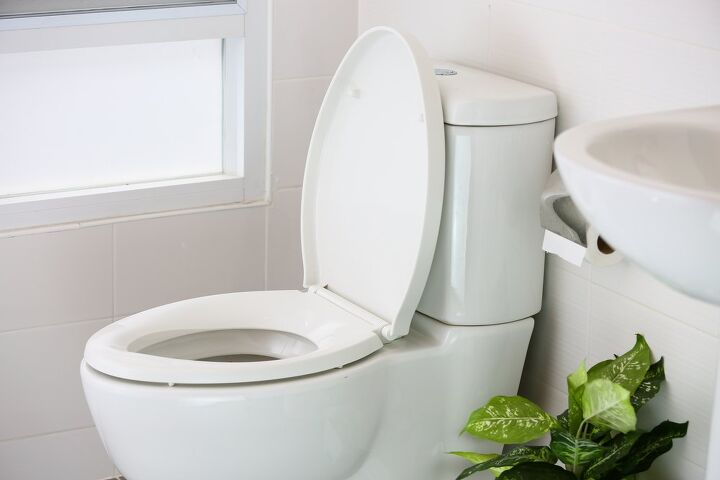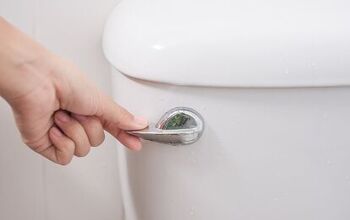Slow-Close Toilet Seat Not Working? (Possible Causes & Fixes)

Slow-close toilet seats have become popular in recent years, particularly because there are a lot of benefits associated with using these seats. But when a slow-close toilet seat malfunctions, such can be a real pain.
In this article, the common slow-close toilet seat malfunctions and problems will be listed, and solutions will be presented as well.
A slow-close toilet seat will not work properly when the hinges are either loose or broken. If the seat is too dirty, such can also cause the seat to not work properly. If you don’t find anything wrong with the hinges, and the toilet seat is still not working properly, you should get a replacement.
Do You Need to Install or Repair a Toilet?
Get free, zero-commitment quotes from pro contractors near you.

What Is a Slow-Close Toilet Seat?
Slow-close toilet seats—as their name implies—close very slowly, but the cool thing is that they close on their own. Of course you will have to give the seat a little nudge, but once you do the tensioned hinges will take care of the rest.
The seat will close in mere seconds, and throughout the entire closing process it doesn’t make a sound. Being quick and quiet aren’t the only qualities that make slow-close toilets great, and five more are listed below.
Why Slow-Close Toilet Seats Are Purchased
Slow-Close Toilet Seats Are Quiet
It was briefly mentioned above, but more attention to this attractive quality should be given. With a slow-close toilet seat, you don’t have to worry about the lid slamming down after you get up from the toilet.
A lot of individuals like to make as little noise as possible when going to the bathroom, and slow-close toilet seats are ideal for these individuals. While the sound of a toilet seat closing is generally not an issue, it can be disturbing at night when housemates are trying to sleep.
Of course slow-close toilet seats are not always quiet, and one that’s making a screeching noise is not working properly. This problem and its solution will both be explained in detail later.
They’re Safer Than Basic Toilet Seats
Slow-close toilet seats are preferred by parents of young children as well as children who are looking after elderly parents, as these toilet seats are safer than traditional toilet seats that slam down if you’re not careful.
A slow-close toilet seat will also prevent pets from drinking out of the toilet bowl, so they’re ideal for pet owners who sometimes forget to put the lid down.
They’re More Sanitary
Slow-close toilet seats are also more sanitary, as they don’t come into contact with bacteria as often as regular toilet seats do. Furthermore, you don’t have to grip a slow-close toilet seat like you’d have to grip a regular toilet seat to close it.
Instead, all that’s required is a little nudge. Slow-close toilet seats can also be removed with very little difficulty, making thorough cleaning of the toilet seat possible.
Remembering to Close the Seat Is Easier
Since activating a slow-close toilet seat is near effortless, individuals who use these toilets have an easier time remembering to put the seat down. Some individuals purposely avoid touching a toilet seat after using the toilet, as they want as little contact with the toilet as possible.
Slow-close toilet seats are ideal for these individuals, as the closing mechanism can be activated by elbow, foot, or knee tap. Therefore, the hands never have to touch the seat, something germ-conscious individuals enjoy.
These Toilet Seats Are Built to Last
Slow-close toilet seats are stronger, more reliable, and sturdier than traditional toilet seats. Of course you’ll be paying for the quality upgrade, but it’s a price worth paying. Every component of a slow-close toilet seat is high-quality, right down to the screws which secure the hinges to the seat.
What to Do When a Slow-Close Toilet Seat Isn’t Working
The above qualities show why slow-close toilet seats are ideal, but these fixtures aren’t infallible. They are mechanical devices after all, which means when they’re used regularly the parts will eventually wear out and get dirty. And of course no toilet seat lasts forever, but getting a slow-close toilet seat that will last well over a decade is possible.
Individuals who use these seats have complained about the following problems, so if you have a slow-close toilet seat—or you intend to purchase one in the future—you should know about these problems as well as their solutions.
Loose Hinges
If the hinges are loose, the seat will not close properly. Specifically, the seat will move side to side when it’s lowering, and such will cause the seat to rest unevenly.
Solution
To fix this problem, ensure the screws that mount the hinges to the toilet seat are firmly secured. If you’re dealing with an old toilet seat—and the attachment has gotten loose because of general wear and tear—you should consider replacing the hinges. But if replacing the hinges is necessary, it’s best to just get a full toilet seat replacement.
Broken Hinges
Broken hinges will prevent the slow-close toilet seat from doing what it does best, i.e. closing slowly. The speed at which the toilet seat closes will depend on how broken the hinges are.
If there’s no more resistance at all, the toilet seat will close like a regular toilet seat, and if you aren’t prepared for this then an unexpected slam is what you’ll get.
Solution
In this instance, it’s best to get a toilet seat replacement, as once the hinges are broken they can’t be repaired. Furthermore, since the hinges are the most important—and therefore most expensive component—getting a replacement toilet seat is more realistic than just replacing the hinges.
Cracked Seat
It’s possible for a slow-close toilet seat to crack, and often cracks occur when there’s too much pressure applied to the seat. A crack can also occur if the seat is lowering at a speed faster than normal. If you notice a crack, you should assess its extent and then determine whether replacement is necessary or not.
Solution
If the crack is minor, you may only need some putty or another filler to remedy the situation. If it’s a deep crack, however, it’s likely full replacement of the seat will be necessary, as eventually the crack may expand so much as to split the toilet seat in two.
You should also try and figure out why the seat cracked before you get a new one, as you may have done something unknowingly to cause the crack.
One obvious no-no is stacking things on the toilet seat. The toilet seat is not meant to be a table, so you shouldn’t stack things on it when it’s not in use. You should also ensure the toilet is in a room that doesn’t experience rapid temperature fluctuations, as these can cause porcelain to crack.
Hard-To-Eliminate Stains and Odors
While slow-close toilet seats don’t get as dirty as traditional toilet seats do, this doesn’t mean that a slow-close seat won’t ever get stained.
The important thing to know here is that tackling stains when you first identify them is what prevents them from getting too bad. Slow-close toilet seats are not difficult to clean, but they do have nooks and crannies just like traditional toilet seats do.
Bacteria, leftover waste, and other undesirable elements can thrive in these nooks and crannies, and if you don’t clean these spots regularly then a foul smell and unsanitary conditions are likely results.
Solution
When you detect a foul smell—and you know it’s coming from the toilet seat and not the toilet itself—you should thoroughly clean the toilet seat using basic bathroom cleaning products. Ensure you have brushes and sponges so you can get at those tough, hard-to-reach places.
If you clean regularly, you’ll ensure that the slow-close toilet seat lasts a long time, and using the toilet won’t be an unpleasant experience.
Do You Need to Install or Repair a Toilet?
Get free, zero-commitment quotes from pro contractors near you.

Related Questions
Is installing a slow-close toilet seat simple?
Installing a slow-close toilet seat is something you can do on your own. All you need is a screwdriver.The speed at which a seat closes is determined at the factory. Therefore, if your seat closes too slowly, it will just need a little help to reach the stationary position.Some slow-close toilet seats are designed to withstand a lot of pressure, such as the ones made by Bath Royale. You won’t be able to force these closed, so if your seat closes too slowly, you’ll either have to accept this or get a new one. If you’re afraid of the seat closing too slowly, you should stay away from these models.
Is the shape of a slow-close toilet seat important?
The shape of the toilet bowl will determine what kind of toilet seat you need. There are two standard shapes, the elongated shape and the round shape.To figure out which seat you’ll need, first measure the bowl. Start at the center, between the seat bolts, and then measure the circumference. Most bowls are between 16 and 17 inches on the inside while the rims are between 18 and 19 inches.

Matt loves everything DIY. He has been learning and practicing different trades since he was a kid, and he's often the first one called when a friend or family member needs a helping hand at home. Matt loves to work with wood and stone, and landscaping is by far his most favorite pastime.
More by Matthew Mountain












![10 Best Zero Turn Mowers – [2022 Reviews & Ultimate Buyer's Guide]](https://cdn-fastly.upgradedhome.com/media/2023/07/31/9070522/10-best-zero-turn-mowers-2022-reviews-ultimate-buyer-s-guide.jpg?size=350x220)
![10 Best Scroll Saws for 2022 [Ultimate Reviews & Buyer's Guide]](https://cdn-fastly.upgradedhome.com/media/2023/07/31/9070684/10-best-scroll-saws-for-2022-ultimate-reviews-buyer-s-guide.jpg?size=350x220)













